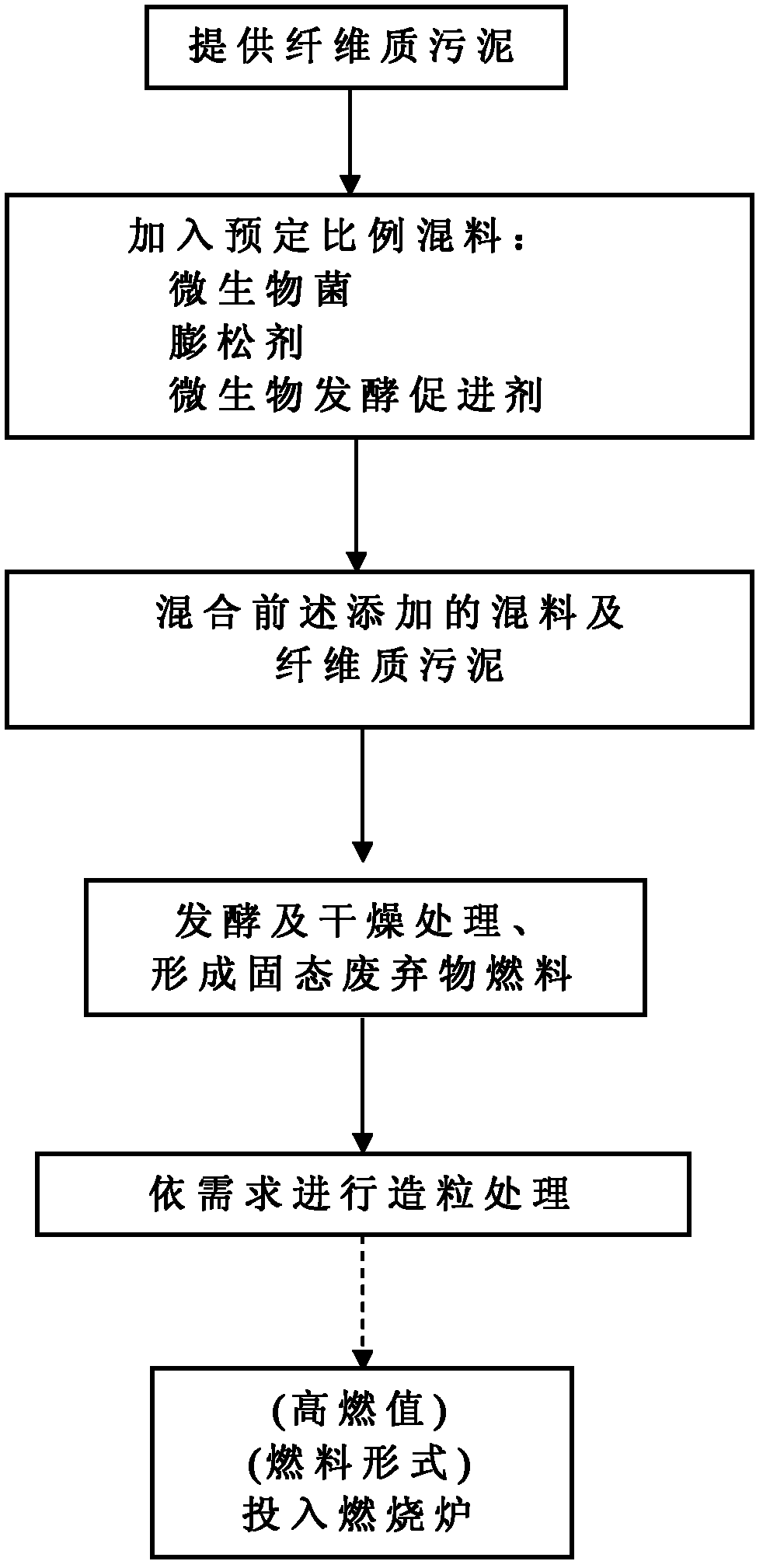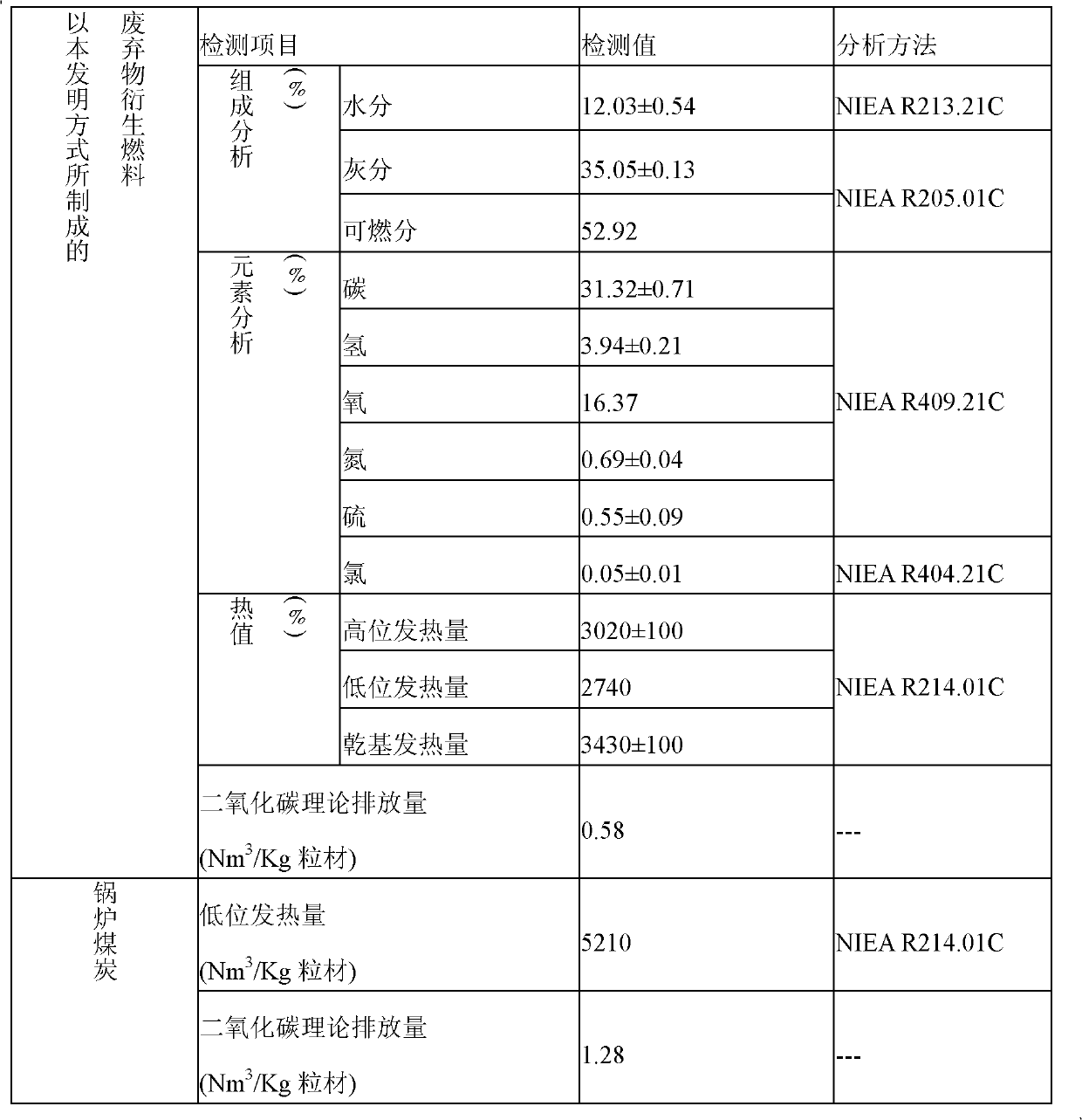Preparation method of refuse derived fuel
A waste and fuel technology, applied in the field of waste-derived fuel preparation, can solve problems such as uneven drying, reduce sludge moisture content, increase vehicle power usage, etc., achieve uniform drying and reduce combustion costs
- Summary
- Abstract
- Description
- Claims
- Application Information
AI Technical Summary
Problems solved by technology
Method used
Image
Examples
preparation example Construction
[0046] The preparation method of the waste-derived fuel provided by the present invention can obtain a good drying effect without external energy sources, especially, in the classification of the obtained waste-derived fuel (Refuse Derived Fuel), it is called "the fifth type of waste Derived fuel (RDF-5)" is mainly used in solid fuel boilers to replace coal, or it can be co-fired with coal.
[0047] Therefore, according to the preparation method of waste derived fuel of the present invention, it comprises the following steps:
[0048] Provide fibrous sludge; add a mixture, which includes microbial bacteria, leavening agents and microbial fermentation accelerators in a predetermined ratio, doped in the fibrous sludge and mix uniformly; mix the uniformly mixed mixture and fibrous The sludge undergoes a fermentation period to form solid waste fuel.
[0049] The cellulosic sludge of the present invention refers to the cellulosic sludge generated from general industrial waste, pre...
Embodiment 1
[0065] Fourteen metric tons of fibrous sludge (such as pulp sludge) with a moisture content of 80% to 100%, mixed with 1.5 kg of microbial bacteria, 1 metric ton of wood chips and 60 kg of rice bran, in a large mixer Mix and stir for 30 minutes, and place it on the open ground every three days to turn it with a stacker or forklift. Ten days later, the original pulp sludge is prepared with a moisture content of 35%.
[0066] The microorganisms in this embodiment are actinomycetes. You can also choose to use Streptomyces Nocardia, a combination of Actinomyces and Streptomyces Nocardia, or other aerobic microorganisms. To achieve this embodiment, the microbial bacteria are used as the source of drying heat energy for the fermentation process.
[0067] As before, the leavening agent in this embodiment is to use wood chips, and you can also choose to use wood residues, straw, rice stalks, rice husks, rice bran, corn stalks, corn stalks, plant fibers, and microorganisms that can dec...
Embodiment 2
[0069] The solid waste fuel produced by the method of Example 1 above is further granulated by a granulator, and the waste-derived fuel RDF-5 produced has a moisture content of less than 15%. The fuel value is increased by about 15% compared with the pulp sludge fuel dried with additional energy.
[0070] The combustion test results of the waste-derived fuel and boiler coal prepared as in Example 2 are shown in Table 1 below.
[0071] Among them, the low-level calorific value is 2,740 kcal per kilogram, and the low-level calorific value of the coal burned by the general boiler in the same test is 5,210 kcal per kilogram. If calculated with the same carbon dioxide emissions, The calorific value of the waste-derived fuel in the embodiment is about 16% higher than that of coal, and in view of the same calorific value, the carbon dioxide emission of the waste-derived fuel in the embodiment is 14% lower than that of coal. From the point of view of the current environmental protect...
PUM
 Login to View More
Login to View More Abstract
Description
Claims
Application Information
 Login to View More
Login to View More - R&D
- Intellectual Property
- Life Sciences
- Materials
- Tech Scout
- Unparalleled Data Quality
- Higher Quality Content
- 60% Fewer Hallucinations
Browse by: Latest US Patents, China's latest patents, Technical Efficacy Thesaurus, Application Domain, Technology Topic, Popular Technical Reports.
© 2025 PatSnap. All rights reserved.Legal|Privacy policy|Modern Slavery Act Transparency Statement|Sitemap|About US| Contact US: help@patsnap.com


